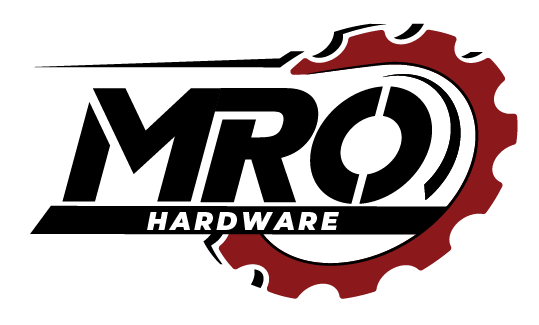When we step into our workplaces, the assurance of safety often begins with the gear we choose to wear. Whether in healthcare, construction, manufacturing, or other fields, personal protective equipment (PPE) forms a vital barrier between us and potential hazards.
Our commitment to safety starts with understanding the correct usage and benefits of PPE. Properly fitted and maintained equipment can mean the difference between a minor incident and a serious injury. Engaging in ongoing education about PPE not only helps us stay safe but also allows us to create a culture of safety within our teams.
As we navigate through different environments, tailored protection through PPE can mitigate unique risks present in specific industries such as mining or manufacturing. By prioritizing proper safety gear, we not only comply with safety standards but also demonstrate our responsibility towards each other’s well-being.
Understanding the Role of PPE and Safety Gear
Proper use of PPE is not just a regulatory requirement but a fundamental practice that enhances workplace safety and protects us against possible injuries or illnesses.

Defining Personal Protective Equipment
Personal protective equipment (PPE) refers to gear designed to protect workers from specific hazards in their environment. Items such as gloves, helmets, goggles, and respirators fall under this category. Each piece of PPE serves a particular purpose, tailored to mitigate particular risks. For instance, gloves may protect against chemical exposure, while helmets guard against head injuries. Clearly understanding what PPE entails helps us select the right equipment for particular tasks.
Risks and Hazards in the Workplace
Workplace environments present various hazards that can lead to injuries or health issues. These include chemical, physical, biological, and ergonomic hazards. Identifying and assessing these risks can help us decide which protective gear is needed to ensure safety.
Administrative controls, alongside PPE, form layers of defense against these hazards. By evaluating potential dangers, we are better prepared to apply effective protective measures.
Types of PPE and Their Applications
Different tasks and environments require various forms of PPE. Head protection with hard hats, eye and face protection with goggles or face shields, and hearing protection with earplugs are common examples. For respiratory risks, masks and respirators are crucial, while protective clothing protects the skin from harmful substances.
Identifying the correct type of PPE based on the task at hand is essential for safety and compliance. Understanding these applications allows us to maintain health standards in diverse settings.
Legal and Regulatory Requirements
Compliance with legal and regulatory standards, such as those set by the Occupational Safety and Health Administration (OSHA) and the American National Standards Institute (ANSI), is a core aspect of workplace safety. These regulations provide guidelines on selecting, wearing, and maintaining PPE.
Ensuring our practices align with these standards not only upholds safety but also prevents legal repercussions. Staying informed about these requirements helps us create a secure and compliant workplace environment.
Best Practices for Selection, Use, and Maintenance of PPE
Selecting, using, and maintaining personal protective equipment (PPE) is essential to ensuring the safety and health of workers. It’s critical that the PPE chosen fits well, is suitable for the specific hazards faced, and is kept in good condition through proper care and regular inspections. Training and compliance are also vital components to the successful use of protective gear.
Choosing the Right PPE for Specific Hazards
We must start by identifying the specific hazards in the workplace to select the appropriate PPE. Whether the risk is chemical exposure, falls, or electrical shock, each hazard requires specific gear. Goggles and eye protection are necessary where chemical splashes might occur, while respirators and masks are essential when air quality is compromised.
In environments with a risk of falling objects, hard hats are indispensable. Similarly, those working in healthcare might need gowns and full-body suits to prevent contamination. Detecting potential hazards early allows for the proper choice of PPE suited to protect against these risks.
Ensuring Proper Fit and Comfort
Ensuring that PPE fits well is a crucial part of its effectiveness. Properly fitted PPE not only offers better protection but also increases comfort, encouraging workers to wear it consistently. Sizes must be available for varied body types, ensuring a snug but not restrictive fit.
Gloves, face shields, and footwear should be tested for fit, as improperly fitted gear can lead to discomfort and reduced functionality. Respirators must create an effective seal around the face. By prioritizing fit and comfort, we enhance overall safety and compliance with PPE usage.
Importance of Training and Compliance
Training is essential for understanding how to correctly use PPE. Staff must be informed about how to put on and remove items like gloves, gowns, and masks safely. Training programs should emphasize the importance of compliance and the risks of non-compliance.
We should conduct regular sessions to refresh knowledge and adapt to new PPE technologies. Compliance with safety protocols ensures the gear is used as intended and provides the protection needed. By making training an ongoing priority, we foster a culture of safety in the workplace.
Care, Inspection, and Maintenance Protocols
Maintaining PPE is vital for continued protection. Regular inspections help identify signs of wear or damage, such as cracks in safety glasses or deformities in hard hats. Cleaning processes ensure that items like gowns and gloves remain free from contaminants.
Establish clear protocols for the storage and disposal of PPE to extend its useful life. Proper maintenance practices, such as avoiding prolonged exposure to sunlight for helmets, enhance durability. Consistent adherence to these protocols ensures that our PPE remains effective and reliable over time.

